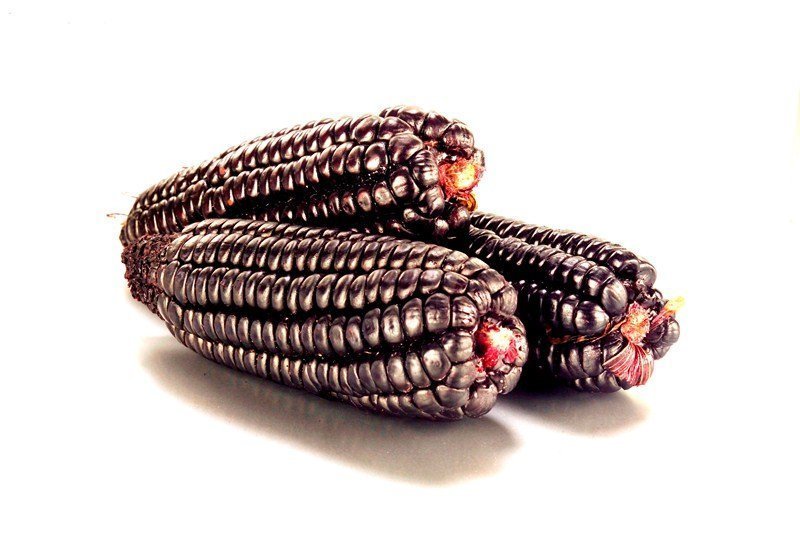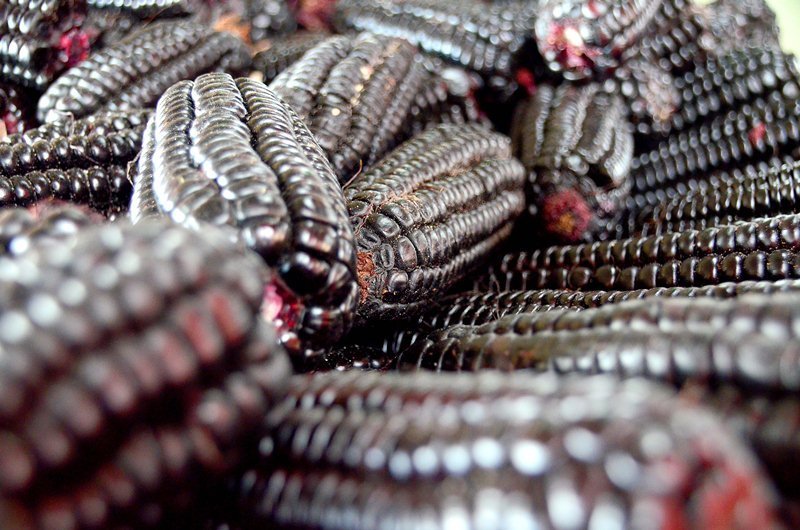
Purple corn, grown organically in the Peruvian andes
The Peruvian mountains of the Andes have a great variety of corn such as purple corn(Zea mays L.). This crop and its effects on health have been represented in ceremonial ceramics in Peru and other Hispanic countries (Inca and Pre-Inca). Currently, in Peru a purple corn drink and stalls like chicha morada and purple mazamorra, respectively, are recognized as highly nutritious.
Zea mays L. (purple waxy corn), a plant of the Poaceae family, is an important source of Anthocyanins. Previous studies have shown that the main ingredient in the water extract is anthocyanin, while the main ingredients in the non-polar solvent are phenolic acids such as p-coumaric acid, vanillic acid, protocatechuic acids, flavonoids such as quercetin and derivatives of Hesperitin. The consumption of hydroalcoholic extract of purple corn is safe up to 3,5 g • kg-1.

In addition, flavonoids, including quercetin, the active ingredient in Zea mays L. (purple waxy corn), also suppress the inhibitory activity of aldose reductase and effectively delay cataracthesis in the diabetic condition. Based on the beneficial effects of the anthocyanins and quercetin mentioned above, the hypothesis that hydroalcoholic extract of waxy purple maize, the substance that is rich in anthocyanins and flavonoids including quercetin, could mitigate cataractogenesis in the diabetic condition. Unfortunately, no data is available so far. Therefore, this study aims to determine the anticataract effect of hydroalcoholic extract of waxy maize purple on experimental diabetic cataract.
Experts suggest that purple waxy maize is the potential beneficial food to protect against diabetic cataracts. Its underlying mechanism seems to depend on the dose. The mean dose of the seed extract exerts its effect through the decreased oxidative stress while the high dose of the seed extract exerts its effect through the suppression effect of aldose reductase, the rate-limiting enzyme in the polyol pathway. However, in vivo research and the search for the active ingredient are still necessary.
Read more about Purple Corn (Zea mays L.) Phenolic Compounds Profile and Its Assessment as an Agent Against Oxidative Stress in Isolated Mouse Organs

